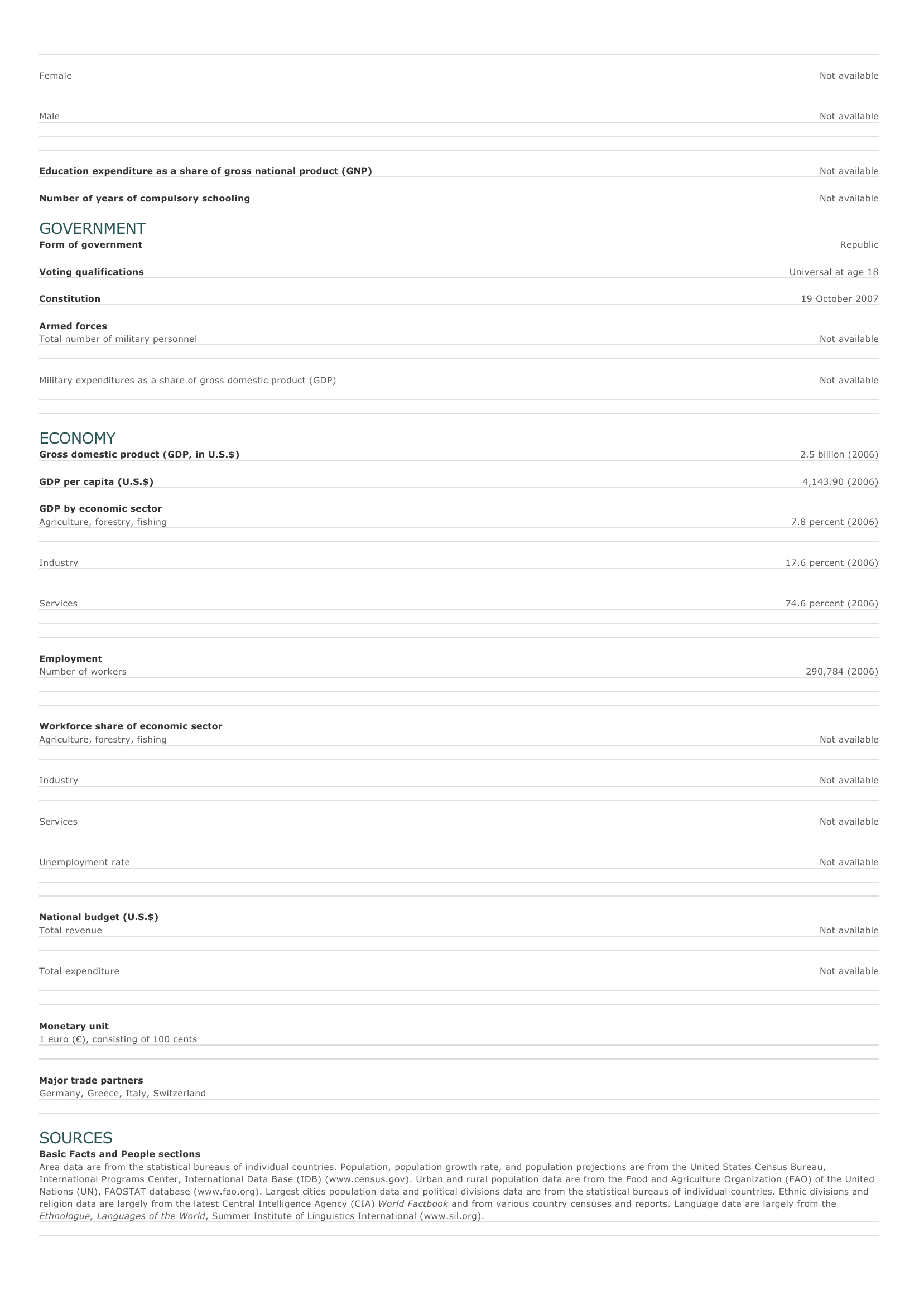Montenegro Facts and Figures.
Publié le 09/05/2013

Extrait du document


«
Female Not available Male Not available Education expenditure as a share of gross national product (GNP) Not available Number of years of compulsory schooling Not available GOVERNMENTForm of government Republic Voting qualifications Universal at age 18 Constitution 19 October 2007 Armed forcesTotal number of military personnel Not available Military expenditures as a share of gross domestic product (GDP) Not available ECONOMYGross domestic product (GDP, in U.S.$) 2.5 billion (2006) GDP per capita (U.S.$) 4,143.90 (2006) GDP by economic sectorAgriculture, forestry, fishing 7.8 percent (2006) Industry 17.6 percent (2006) Services 74.6 percent (2006) EmploymentNumber of workers 290,784 (2006) Workforce share of economic sectorAgriculture, forestry, fishing Not available Industry Not available Services Not available Unemployment rate Not available National budget (U.S.$)Total revenue Not available Total expenditure Not available Monetary unit1 euro (€), consisting of 100 cents Major trade partnersGermany, Greece, Italy, Switzerland SOURCESBasic Facts and People sectionsArea data are from the statistical bureaus of individual countries.
Population, population growth rate, and population projections are from the United States Census Bureau,International Programs Center, International Data Base (IDB) (www.census.gov).
Urban and rural population data are from the Food and Agriculture Organization (FAO) of the UnitedNations (UN), FAOSTAT database (www.fao.org).
Largest cities population data and political divisions data are from the statistical bureaus of individual countries.
Ethnic divisions andreligion data are largely from the latest Central Intelligence Agency (CIA) World Factbook and from various country censuses and reports.
Language data are largely from the Ethnologue, Languages of the World , Summer Institute of Linguistics International (www.sil.org)..
»
↓↓↓ APERÇU DU DOCUMENT ↓↓↓
Liens utiles
- Wyoming - Facts and Figures.
- Wisconsin - Facts and Figures.
- Washington - Facts and Figures.
- West Virginia - Facts and Figures.
- Alberta - Facts and Figures.




